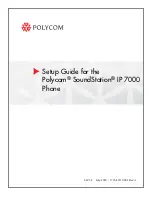
Confidential
USERS MANUAL
63(158)
Document number
Revision
1/198 17-4/FCP 101 3045 Uen
D
Parameter
Description
1 NAM
2
<reg>
Registration control (in hex)
00
All registration types enabled
01
Autonomous (timer) registration disabled
02
SID change registration disabled (not supported)
04
NID change registration disabled (not supported)
08
Power up registration disabled
10
Power down registration disabled
20
Zone registration disabled (CDMA)
40
Distance registration disabled (CDMA)
80
Parameter-based registration disabled (CDMA)
NOTE: If MicroBurst is enabled (Section 0), this command is disabled and all settings are ignored.
4.5.2 AT*EREGF
(Forced
Registration)
Description
Syntax
Possible Responses
Set input source selection
AT*EREGF=<setting>
OK
This command forces a registration. If the module is camped on a CDMA network, the input parameter
determines what type of registration to perform. On an AMPS network, the input parameter is ignored since all
registrations are timer-based. Note: this command will override any registration limitations established by the
base station.
When the command is issued, the CM52 module will perform a single registration attempt in the network. This
command supersedes AT*EREGC.
Parameter
CDMA Registration Type
<Setting>
0 Timer
Based
1 Power
Up
2 Zone
Based
4 Parameter
Change
5 Ordered
6 Distance-Based
4.5.3
AT*EREGT (Retain Registration Time)
Description
Syntax
Possible Responses
Write setting
AT*EREGT=<setting>
OK
Read setting
AT*EREGT?
*EREGT: <setting>
OK
This command enables timer based registration time to be saved over a restart (power cycle); the previous
registration time will be used when the module restarts. If the time has expired the module will register when
powered up.
This behavior is NOT the standard means for handling registration; however when combined with restricting
power up and power down registrations (AT*EREGC), it can create a means to reduce the number of
registrations occurring if the module is to be powered up and down repetitively during a short timeframe.
Consult with your network providers regarding the use of this AT command
















































